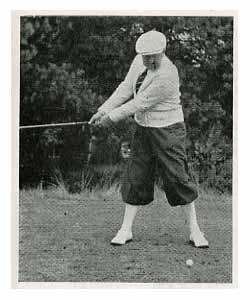
A Swing Biomechanics Analysis of Bobby Locke’s Golf Lesson
Bobby Locke, a legendary golfer of the 1940s and 1950s, espoused a swing technique that emphasized a balanced and sequential motion. A biomechanical analysis of Locke’s swing reveals several key principles that contributed to his consistency and power.
First, Locke employed a wide stance with his feet parallel and evenly distributed, ensuring a stable base. His backswing followed a curved path, keeping the clubhead close to his body and promoting a smooth transition into the downswing. This path also enabled him to generate significant clubhead speed.
Locke’s downswing was equally precise, with his hips initiating the movement and his arms following in a fluid sequence. His swing arc exhibited an inside-out trajectory, which prevented him from flipping his wrists and promoted a controlled release of the ball.
By analyzing the biomechanics of Locke’s swing, we can deduce the fundamental principles of efficient golf mechanics that can enhance the performance of golfers at all levels.

